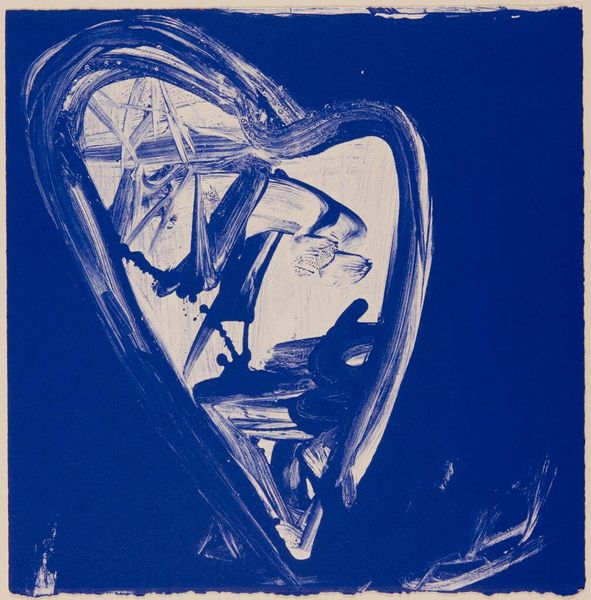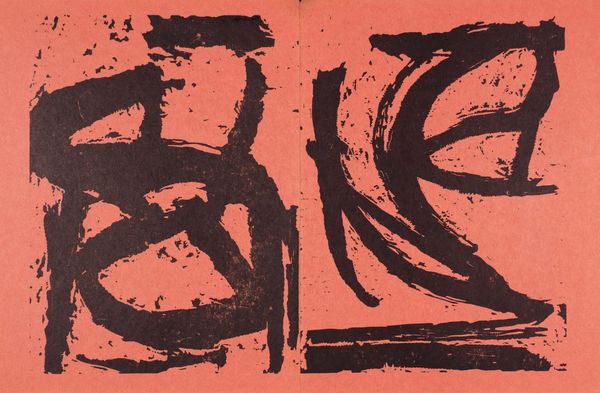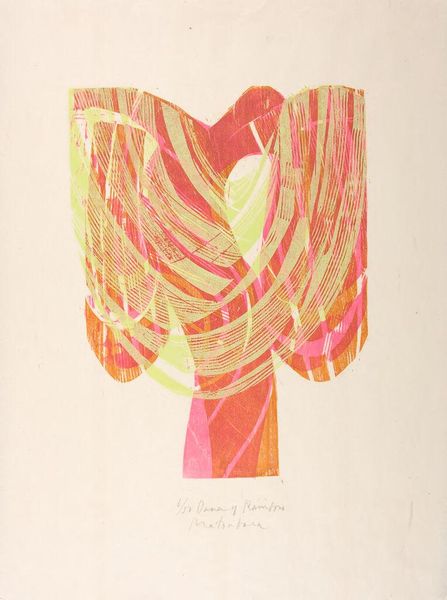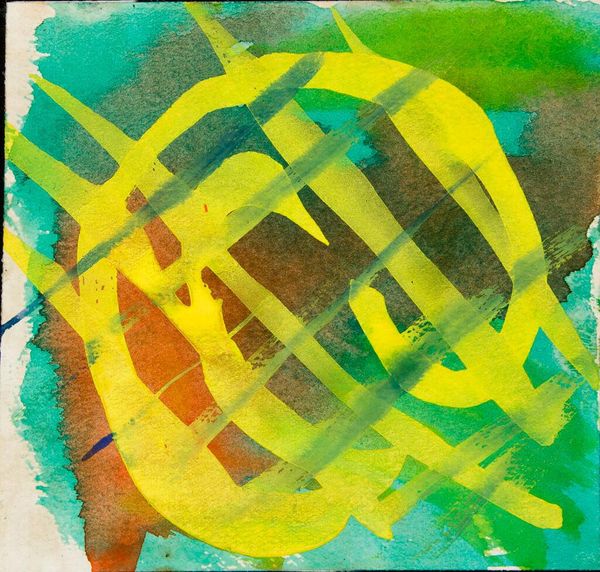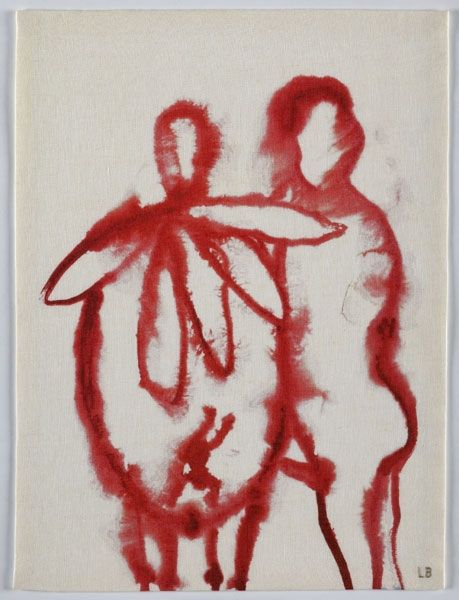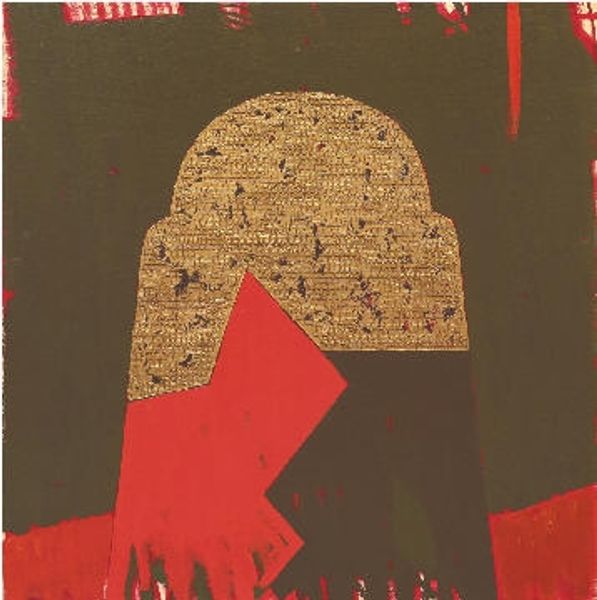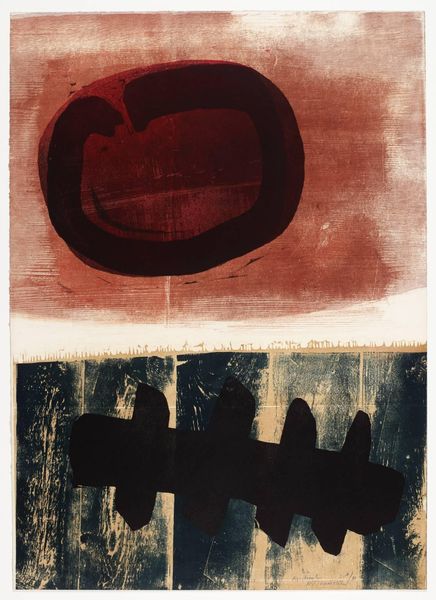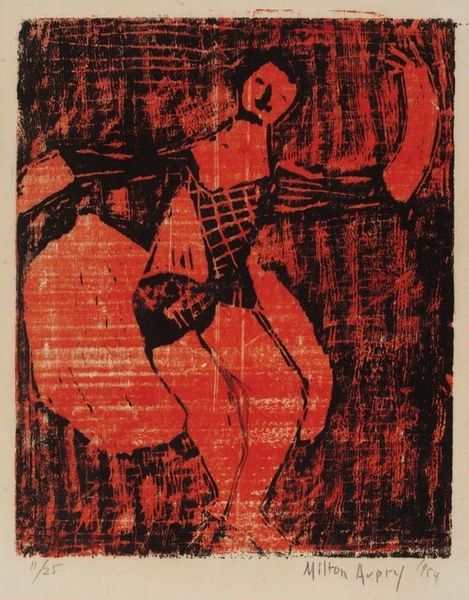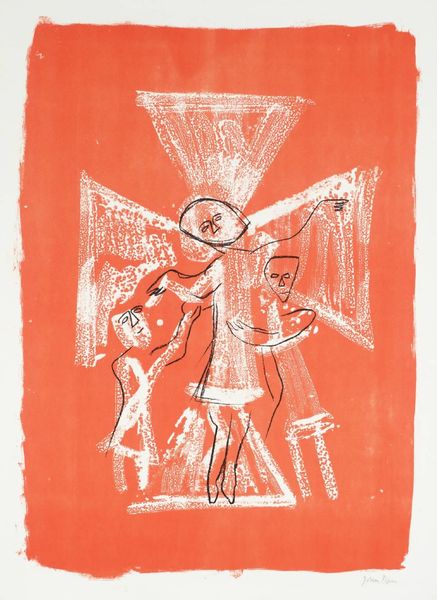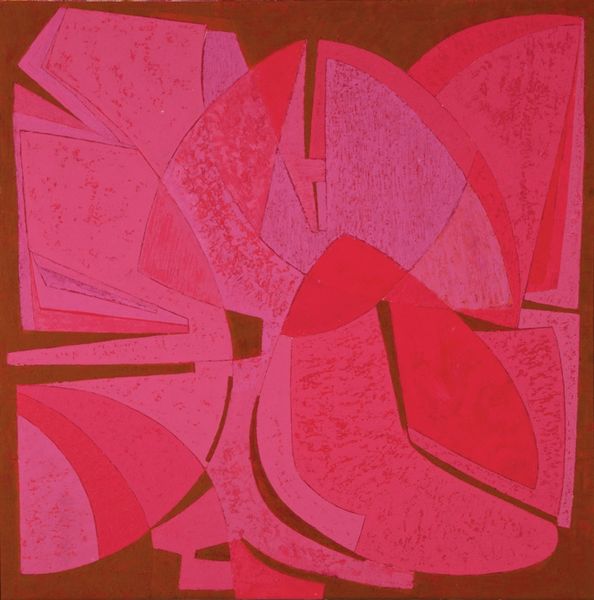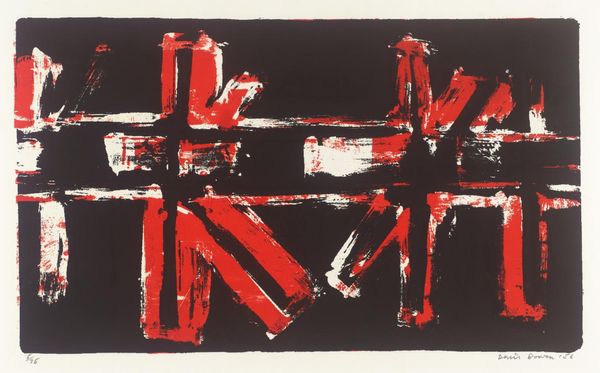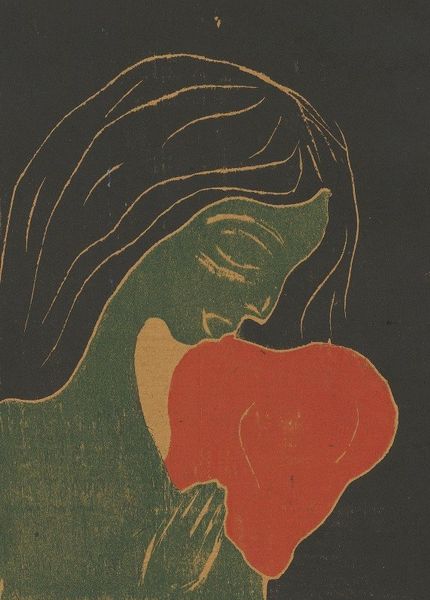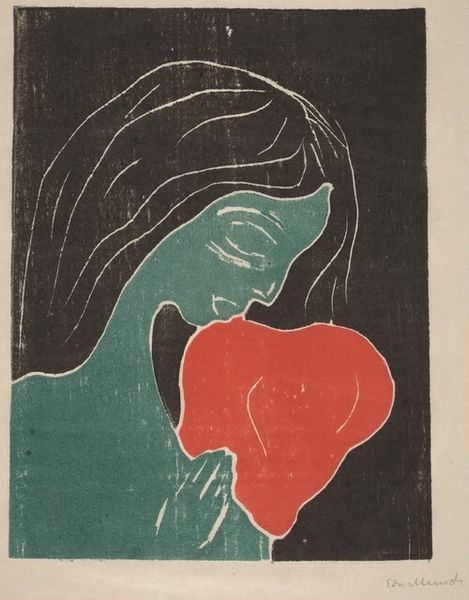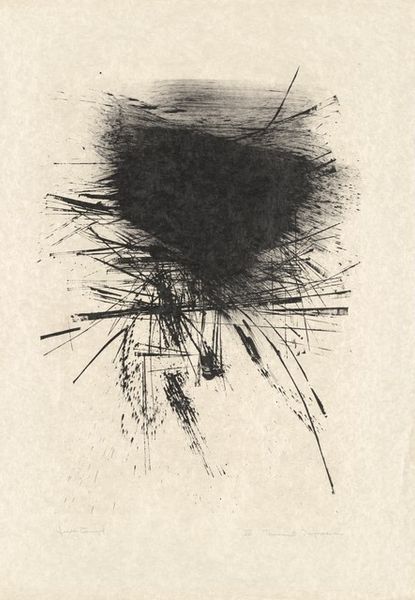
Copyright: Public Domain: Artvee
Curator: Ah, "The Heart" by Karl Wiener, created around 1930. It’s a small print, likely an ink-based process, with a striking abstract figuration. What strikes you immediately about it? Editor: It feels like a primal scream in red and black. That vibrant heart, almost painfully bright against the murky background. Is it bleeding, or crying? Curator: Perhaps both. It's interesting you use those words. There’s a raw expressionism to it, and a symbolic depth that whispers of internal conflict and passion. Wiener, like many artists of his era, was wrestling with the world in turmoil, channeling that unease through form and color. Look at the texture of the print, almost like woodcut but much smoother. Editor: The materiality speaks volumes. The density of the ink suggests a laborious process. Given the time, was this a form of accessible art-making, perhaps reflecting broader societal shifts and democratization of artistic production? Could multiple copies be made? It suggests the potential for art as a social message rather than a purely individual expression. Curator: Absolutely. The accessibility of printmaking makes it easier to have broad consumption, especially given its message about form and being. The kiss? The teardrops? I imagine those lips as whispering something. It might suggest it can be seen through several points of view. What a kiss in your experience looks like compared to what the artists depicts, the comparison adds a special layer of intrigue and invites deeply introspective thoughts about it. It's a dance between the visible and the felt. Editor: That interplay of the tactile, the visual, and the implied message – it elevates the simple materials. The red leaps off the paper, demanding attention. Was there a particular political or social climate that might have informed Wiener's choice to represent the heart in this way? Curator: Certainly. The interwar period was fraught with anxieties, the rise of extremism. Artists sought to explore inner truths. Maybe the artist questions, as he makes copy and copy, whether we feel more love? What kind of political or societal questions do you think it brings forth? Editor: We started by examining production techniques, but this all circles back to an incredibly personal place. I like how this work, though made from base materials, touches on such monumental things, grief and fear. Curator: Yes. It’s a testament to the power of art. Taking those base elements, Wiener captured the ache of the human heart in a way that still resonates today.
Comments
No comments
Be the first to comment and join the conversation on the ultimate creative platform.

